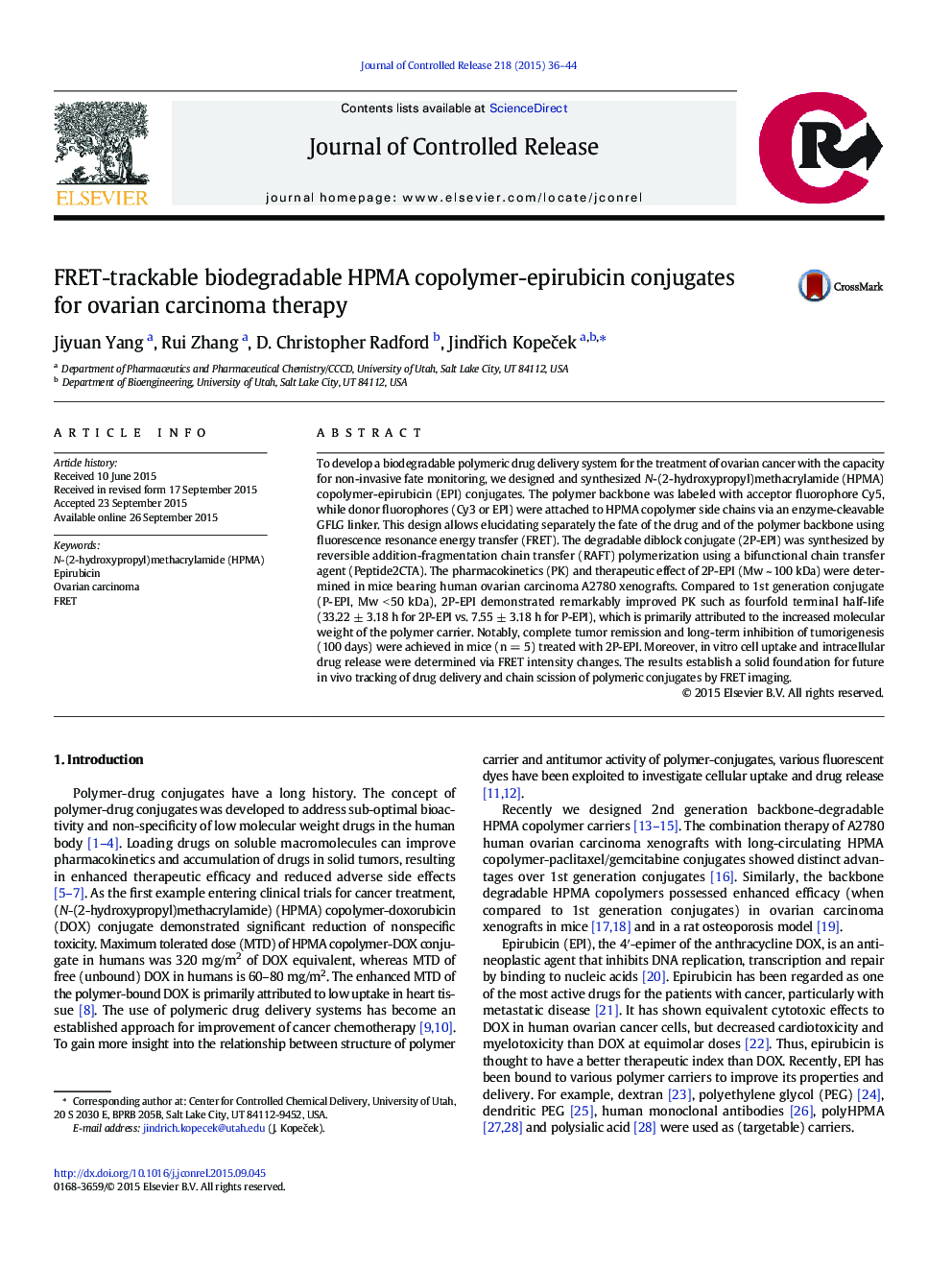| Article ID | Journal | Published Year | Pages | File Type |
|---|---|---|---|---|
| 1423638 | Journal of Controlled Release | 2015 | 9 Pages |
To develop a biodegradable polymeric drug delivery system for the treatment of ovarian cancer with the capacity for non-invasive fate monitoring, we designed and synthesized N-(2-hydroxypropyl)methacrylamide (HPMA) copolymer-epirubicin (EPI) conjugates. The polymer backbone was labeled with acceptor fluorophore Cy5, while donor fluorophores (Cy3 or EPI) were attached to HPMA copolymer side chains via an enzyme-cleavable GFLG linker. This design allows elucidating separately the fate of the drug and of the polymer backbone using fluorescence resonance energy transfer (FRET). The degradable diblock conjugate (2P-EPI) was synthesized by reversible addition-fragmentation chain transfer (RAFT) polymerization using a bifunctional chain transfer agent (Peptide2CTA). The pharmacokinetics (PK) and therapeutic effect of 2P-EPI (Mw ~ 100 kDa) were determined in mice bearing human ovarian carcinoma A2780 xenografts. Compared to 1st generation conjugate (P-EPI, Mw < 50 kDa), 2P-EPI demonstrated remarkably improved PK such as fourfold terminal half-life (33.22 ± 3.18 h for 2P-EPI vs. 7.55 ± 3.18 h for P-EPI), which is primarily attributed to the increased molecular weight of the polymer carrier. Notably, complete tumor remission and long-term inhibition of tumorigenesis (100 days) were achieved in mice (n = 5) treated with 2P-EPI. Moreover, in vitro cell uptake and intracellular drug release were determined via FRET intensity changes. The results establish a solid foundation for future in vivo tracking of drug delivery and chain scission of polymeric conjugates by FRET imaging.
Graphical abstractFigure optionsDownload full-size imageDownload high-quality image (219 K)Download as PowerPoint slide
